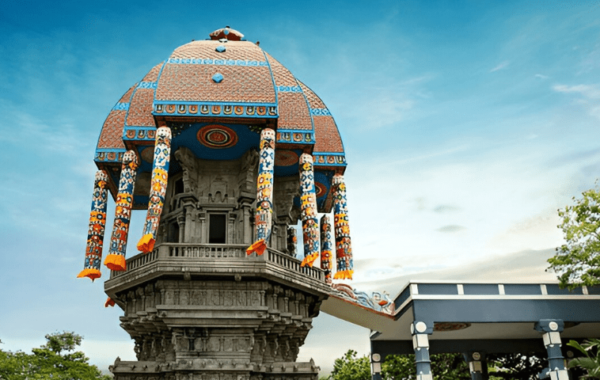
Top 5 Architectural Bridges in the World
Bridges are more than just structures that connect two points—they are enduring symbols of human innovation, creativity, and architectural excellence. From towering spans that defy gravity to elegantly designed pathways that fuse history with modernity, bridges across the globe showcase the limitless potential of civil engineering.Whether it’s the tallest bridge in the world piercing the clouds or the highest bridge in the world suspended over deep valleys, these structural marvels aren’t just about getting from point A to B—they tell powerful stories of design, resilience, and artistic brilliance.In this blog, we explore the top 5 architectural bridges in the world that blend functionality with awe-inspiring design. These iconic landmarks not only support millions of commuters and tourists every year but also elevate the cities and landscapes they belong to. Prepare to be inspired by the perfect harmony of form and function.
Top 5 Architectural Bridges around the world!
1. Millau Viaduct—France
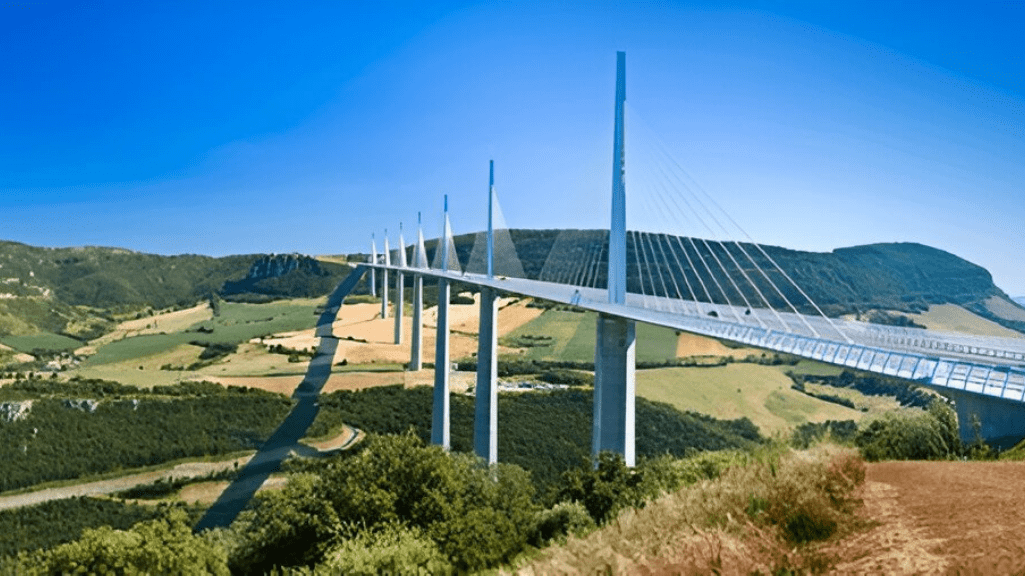
Stretching across the Tarn Valley in southern France, the Millau Viaduct is more than just a bridge—it’s a stunning architectural masterpiece that has redefined modern engineering. With a soaring height of 343 meters, it holds the title of the tallest bridge in the world, even surpassing the Eiffel Tower in vertical clearance; hence, it is among the top 5 architectural bridges around the world.
Designed by world-famous architect Norman Foster and structural engineer Michel Virlogeux, this cable-stayed bridge was constructed to ease traffic congestion along the A75 motorway and provide a seamless connection through the Massif Central mountains. The bridge features sleek lines, seven elegant pylons, and a deck that appears to float above the clouds—a breathtaking view captured in countless Millau Viaduct photos across travel and architecture sites.
Millau Viaduct Facts
- Height: 343 meters (1,125 ft) from the base to the top of the tallest mast
- Length: 2,460 meters
- Construction Time: 3 years (2001–2004)
- Opened: December 14, 2004
- Designer: Norman Foster
- Type: Cable-stayed
- Location: Near Millau, southern France
- Toll bridge: Yes
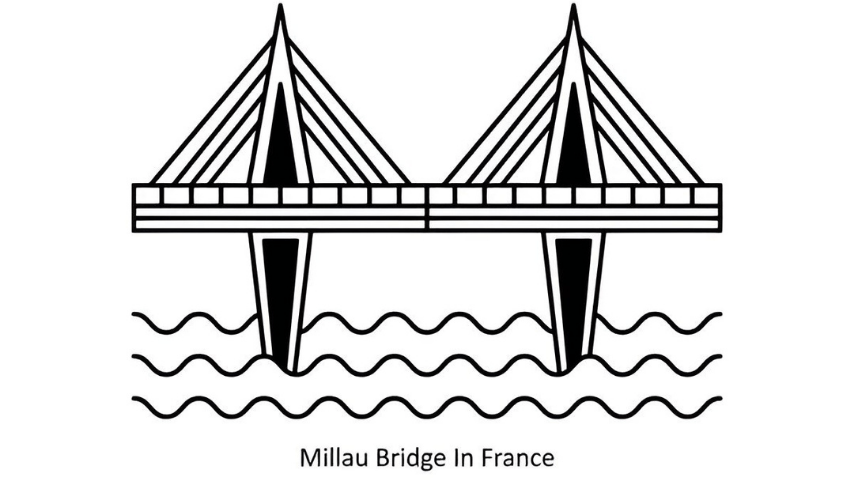
These Millau Viaduct facts make it one of the most ambitious and admired infrastructure projects in modern European history.
2. Golden Gate Bridge – San Francisco, USA
Many ask, Where is the Golden Gate Bridge?
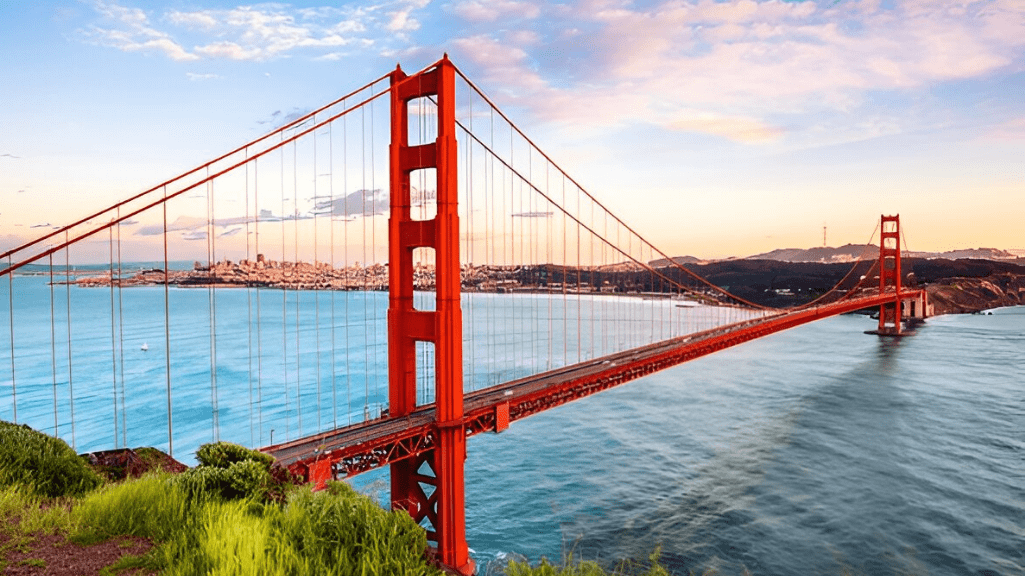
The Golden Gate Bridge, often referred to as the Golden Gate Bridge USA, is one of the most iconic structures in the world. Spanning the Golden Gate Strait that connects San Francisco Bay to the Pacific Ocean, this suspension bridge is a marvel of American innovation and 20th-century engineering.
The Golden Gate Bridge history dates back to the 1930s, during the Great Depression. Despite economic challenges and skepticism, chief engineer Joseph Strauss, along with consulting architects and structural engineers, brought this vision to life. Construction began in 1933 and was completed in 1937, making it the longest and tallest suspension bridge of its time.
One of the key Golden Gate Bridge facts is that over 100,000 tons of steel were used in its construction, and it continues to withstand fierce Pacific winds and earthquakes, so it stays in top 5 architectural bridges in the world.
Why Is It Called the Golden Gate Bridge?
Many wonder why it is called the Golden Gate Bridge, especially since it isn’t golden in color. The name actually comes from the Golden Gate Strait, the narrow waterway the bridge spans. Explorer John C. Frémont likened the strait to a “golden gate to trade with the Orient” in the 1840s—long before the bridge was built.
Golden Gate Bridge Collapse—Fact vs Fiction
Online searches like “Golden Gate Bridge collapse” often trend, but it’s important to note that the Golden Gate Bridge has never collapsed. While there have been tragic incidents and maintenance shutdowns, the structure itself remains remarkably resilient. Viral videos titled “Golden Gate Bridge collapse” usually refer to CGI simulations or confusion with other bridge disasters.
In fact, the bridge has undergone multiple seismic retrofitting projects to ensure it withstands major earthquakes in the San Francisco Bay Area.
Golden Gate Bridge San Francisco USA Facts
Here are a few more fast Golden Gate Bridge San Francisco USA facts:
- Opened: May 27, 1937
- Main Span: 1,280 meters (4,200 feet)
- Total Length: 2,737 meters (8,981 feet)
- color: International Orange
- Toll Bridge: Yes (southbound only)
- Pedestrian Access: Open to walkers and cyclists
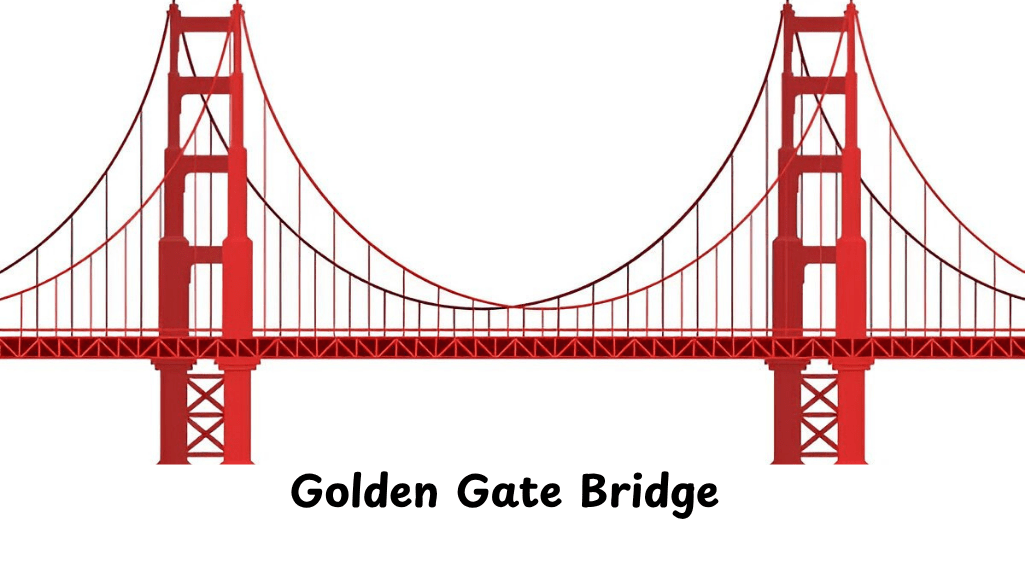
3.Tower Bridge – London, UK
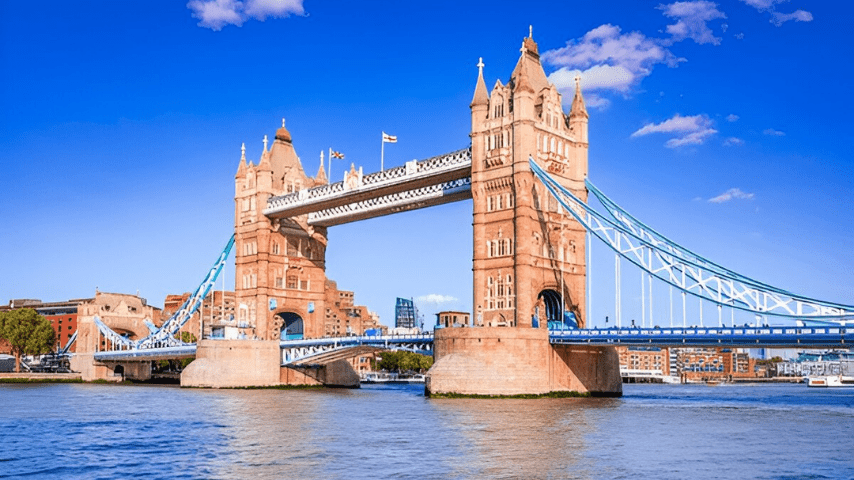
With its Gothic-style towers, walkways, and signature drawbridge mechanism, Tower Bridge London UK is one of the most iconic bridges in the world. Often mistaken for the nearby London Bridge, Tower Bridge stands out with its ornate design and deep historical significance. Since its opening in 1894, it has become an enduring symbol of Victorian engineering and London’s architectural legacy.
Tower Bridge London UK History
The Tower Bridge London UK history began in the late 19th century, during a time when East London’s growing commercial activity demanded a new river crossing. However, a traditional fixed bridge couldn’t be built too close to the Tower of London or obstruct shipping access to the port. As a solution, a bascule (drawbridge) design was chosen.
After eight years of construction, Tower Bridge was officially opened on June 30, 1894, by the Prince and Princess of Wales. It was designed by Sir Horace Jones (City Architect) and engineered by Sir John Wolfe Barry.
Tower Bridge London UK Height and Dimensions
Curious about the Tower Bridge London UK height? The bridge stands 65 meters (213 feet) tall at its towers, with the walkway sitting approximately 42 meters (138 feet) above the Thames when raised. The central span is 61 meters (200 feet) long, which opens in two halves to allow river traffic to pass through—a mechanism powered originally by steam and now operated hydraulically.
Why Was the Tower Bridge Built?
The core reason why the Tower Bridge was built was to relieve congestion in East London while maintaining access for tall ships. At the time, more than 14,000 river vessels passed through this stretch of the Thames each year. The bascule mechanism allowed the bridge to open in just about 60 seconds, showcasing Victorian ingenuity.
Tower Bridge Facts
Here are some fascinating Tower Bridge facts:
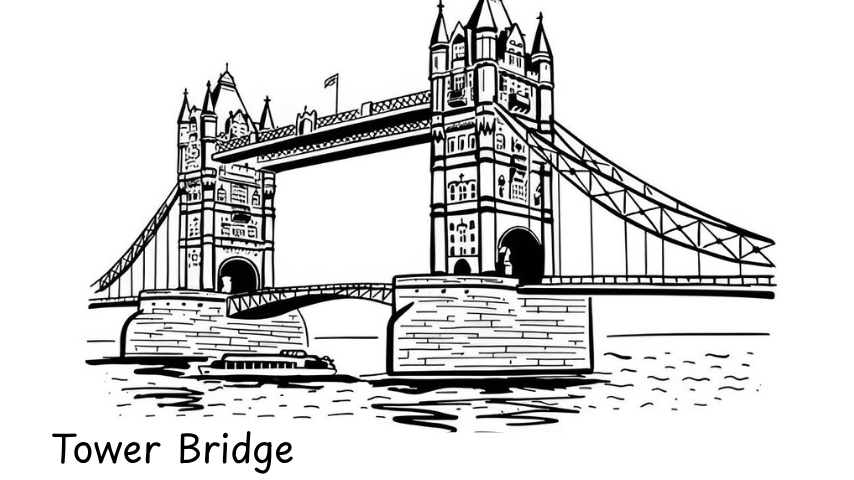
- Construction started: 1886
- Opened to public: 1894
- Design: Bascule and suspension hybrid
- Material used: More than 11,000 tons of steel
- Original lifting mechanism: Steam-powered
- Current lifting system: Electro-hydraulic system
- Walkways: Glass-floor walkways opened in 2014 for tourists
Despite often being confused with London Bridge, Tower Bridge is the more famous and visually striking structure making it one among the top 5 architectural bridges around the world.
Tower Bridge Hours & Visitor Info
For those planning a visit, here are the current Tower Bridge hours (subject to seasonal changes):
- Opening Hours: 9:30 AM to 6:00 PM (last entry at 5:00 PM)
The Tower Bridge Exhibition allows visitors to explore the Victorian engine rooms, walk on the high-level glass walkways, and learn more about its history and operations.
Tower Bridge is more than just a bridge—it’s a masterpiece of design and function. Its blend of mechanical innovation, architectural charm, and historical depth makes it a must-see landmark in London and a proud representation of Britain’s engineering legacy.
4.Akashi Kaikyō Bridge – Japan’s Engineering Wonder
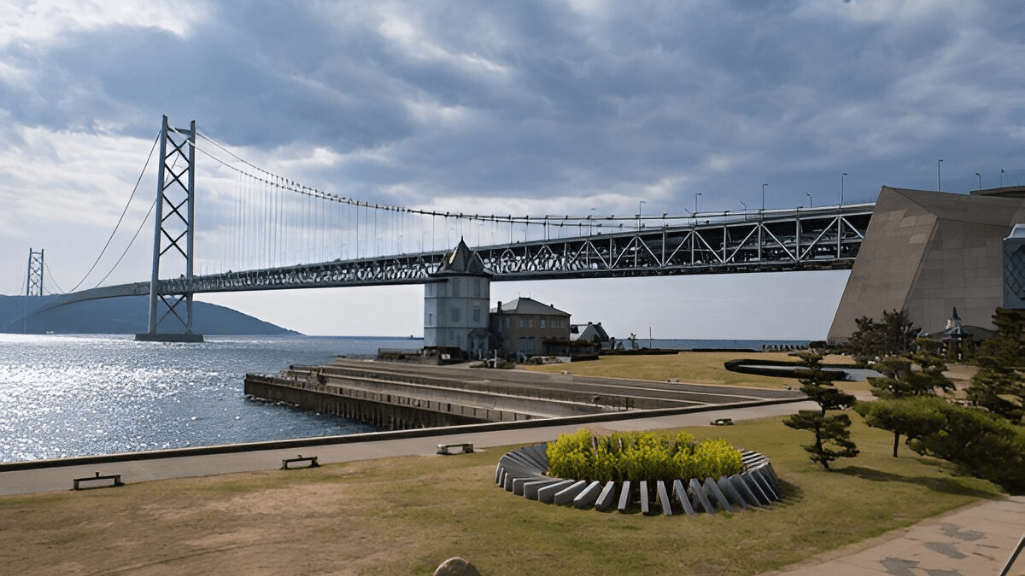
Also known as the Pearl Bridge, the Akashi Kaikyō Bridge is the longest suspension bridge in the world, spanning an impressive 3,911 meters (12,831 feet). It connects the city of Kobe on Honshu to Awaji Island across the Akashi Strait, a treacherous waterway known for its severe storms and heavy maritime traffic.
Why Is the Akashi Kaikyō Bridge Important?
If you’re wondering why the Akashi Kaikyō Bridge is important, the answer lies in both its scale and purpose. Before the bridge was constructed, ferry travel across the Akashi Strait was dangerous—tragically, a severe storm in 1955 caused two ferries to capsize, claiming over 160 lives. The Japanese government responded with plans for a permanent, safer connection.
The bridge:
- Supports over 23,000 vehicles daily
- Can withstand earthquakes up to 8.5 magnitude
- Was designed to resist typhoons with wind speeds up to 286 km/h
It represents Japan’s commitment to resilient infrastructure, integrating seismic dampers, aerodynamic structure, and deep foundations to protect against natural disasters. That’s what makes the Akashi Kaikyō Bridge a global benchmark in civil engineering and one of the top 5 architectural bridges in the world.
What Does the Akashi Kaikyō Bridge Cross?
The Akashi Kaikyō Bridge crosses the Akashi Strait, a 4 km-wide channel between Honshu and Awaji Island. This body of water is part of the Seto Inland Sea, an important commercial and navigation route. The bridge is also a key component of the Honshu-Shikoku Highway, improving regional connectivity and reducing travel time between islands.
How Much Weight Can the Akashi Kaikyō Bridge Hold?
Engineered for durability and strength, how much weight can the Akashi Kaikyō Bridge hold is a frequent question. The bridge was constructed with 2 main cables, each made of 300,000 kilometers of wire—enough to circle the Earth over seven times.
These cables support:
- A main span of 1,991 meters
- Road decks capable of carrying up to 100,000 tons
- Daily traffic comprising thousands of passenger vehicles and cargo trucks
Its massive capacity makes it not just a transportation route but a lifeline for trade and emergency logistics.
Akashi Kaikyō Bridge Facts at a Glance
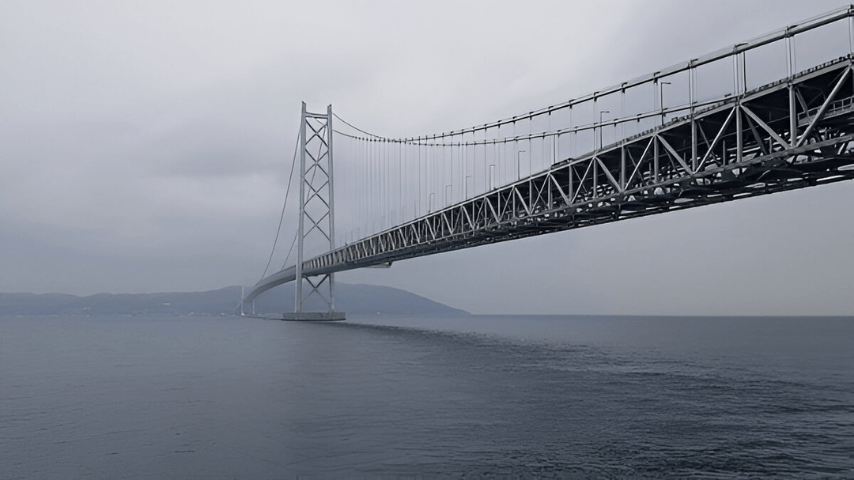
- Opened: April 5, 1998
- Total length: 3,911 meters
- Main span: 1,991 meters – longest in the world
- Height of towers: 282.8 meters
- Nickname: Pearl Bridge
- Design type: Suspension bridge
- Seismic protection: Built to survive major earthquakes like the 1995 Kobe quake
From both a functional and symbolic perspective, the Akashi Kaikyō Bridge is a breathtaking example of what’s possible when innovation meets necessity. It stands as a testament to Japan’s mastery of engineering, its dedication to safety, and its vision of connecting communities across even the harshest natural divides.
5. Sydney Harbour Bridge – Sydney, Australia
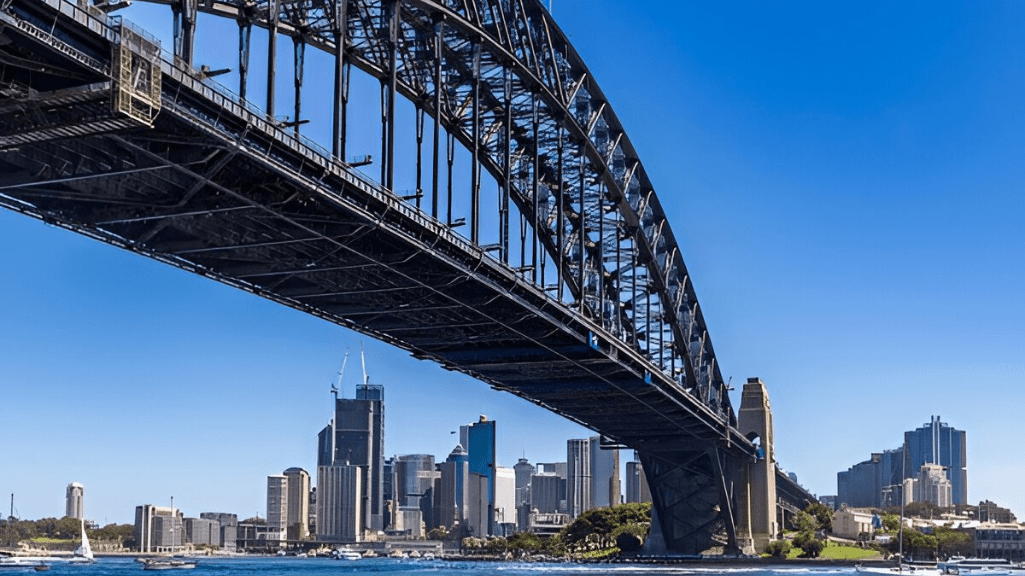
Who Designed the Sydney Harbour Bridge?
The Sydney Harbour Bridge was designed and constructed by British firm Dorman Long and Co Ltd, under the supervision of chief engineer J.J.C. Bradfield from the New South Wales Department of Public Works. Bradfield is often credited as the “father” of the bridge, due to his persistent vision and leadership throughout the project.
Why was the Tower Bridge built?
While this question refers to a different iconic structure in London, it highlights the similar rationale behind such bridges: combining utility with architectural excellence. Like Tower Bridge in the UK, Sydney Harbour Bridge was built to improve connectivity and support urban expansion—especially vital for a growing city like Sydney in the early 20th century.
Sydney Harbour Bridge Facts
The Sydney Harbour Bridge Sydney is not just a major feat of engineering but also a record-holder in many ways. Here are some fascinating facts:
- Total Length: 1,149 meters
- Arch Span: 503 meters – making it the world’s largest steel arch bridge at the time of its completion
- Height: 134 meters from top to water level
- Weight: Approximately 52,800 tonnes of steel
- Daily Traffic: Carries more than 200,000 vehicles, trains, cyclists, and pedestrians daily
- Construction Time: Took 8 years to complete (1924–1932)
- Nicknames: Commonly known as “The Coathanger” due to its arch shape
- Paint: The bridge is painted with around 30,000 liters of paint for maintenance every 5–7 years
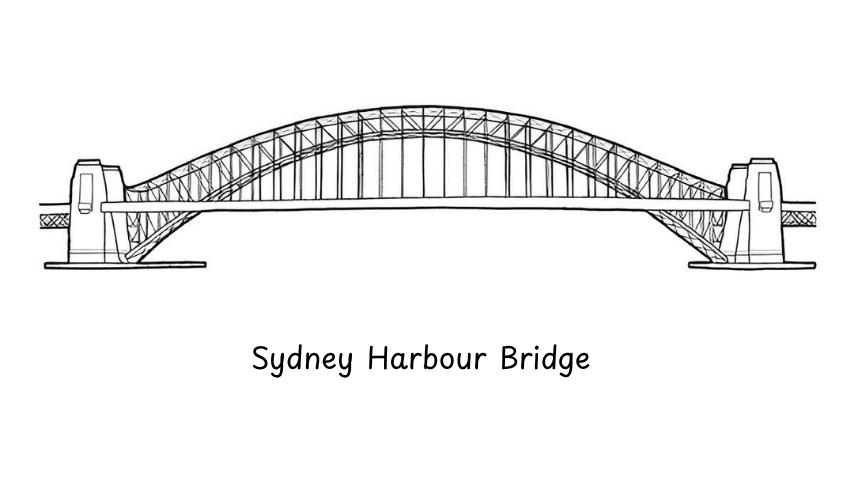
Its dual function as a transport hub and a tourist hotspot makes it a uniquely versatile structure in the top 5 architectural bridges in the world.
***If you’re fascinated by iconic structures and the visionaries behind them, don’t miss our feature on the famous architects who shaped the world. Their groundbreaking work continues to inspire awe-inspiring bridges and architectural landmarks across the globe.
Final Thoughts
The world’s best architectural bridges are more than infrastructure—they’re landmarks, artworks, and milestones in engineering. These top 5 architectural bridges offer more than just breathtaking views—they tell stories of resilience, design brilliance, and progress. They connect cities, communities, and people in the most visually stunning and structurally sound ways imaginable.
As we continue to push the boundaries of what’s possible, future bridges may soar even higher, span even farther, and dazzle even brighter. But for now, these five global wonders remain unmatched testaments to how form and function can beautifully coexist. As cities grow and transportation needs evolve, these bridges inspire future architects and engineers to design with purpose, beauty, and resilience.


